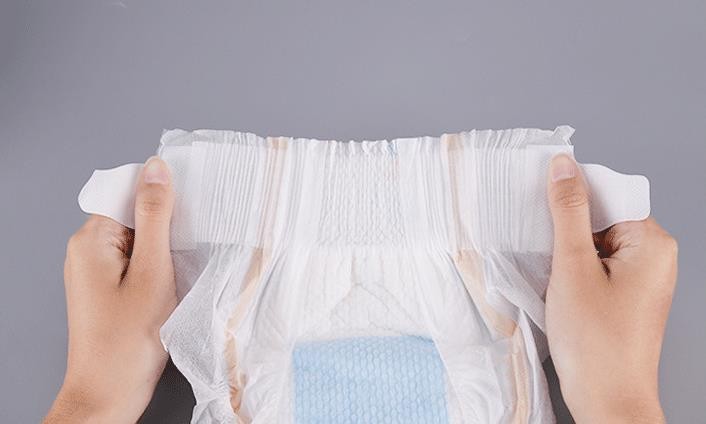In recent decades, with the continuous development of non woven technology at home and abroad, non woven used disposable sanitary articles has been upgraded, and new products emerge in endlessly. In the fiber raw materials, production technology, appearance and other aspects of the display of many innovative achievements, to meet the disposable products for material ventilation, rapid moisture absorption, moisture permeability, prevent backflow and comfortable skin contact requirements. This paper introduces the new raw materials of non woven for disposable hygienic use, including non woven fabric of new surface layer and new absorbing core layer.
In the daily use of disposable sanitary products, the surface layer of non woven is in close contact with the skin, which can only guide urine, and the liquid absorption is almost zero. Therefore, improving its skin friendliness and minimizing the impact of disposable sanitary products on users' quality of life are the biggest challenges in its design and development. Currently, the commonly used surface nonwoven materials have been difficult to meet the diversified needs of consumers.
Silk fiber is a kind of high-grade textile fiber raw material. The fiber is smooth, thin and soft, and has good skin adaptability. The friction irritation coefficient with human skin is only 7.4%, which has good safety and environmental protection. Therefore, silk fiber has good application potential in the non woven surface of disposable sanitary products, and can develop high-grade diapers, sanitary napkins, pads and other products with health care functions.
One of the direct ways to improve the performance of disposable sanitary products is to screen new fiber raw materials for non woven fabrics, and optimize the material structure and process technology.

As the demand for disposable sanitary products increases year by year, the use of fluff pulp fiber and sap, the main raw materials of the absorption core layer of disposable sanitary products, also increases. However, with the rising price of fluff pulp raw materials, more and more people began to pay attention to the development and research of new materials and new processing methods in the production of absorption core layer.
It is different from the absorption core of disposable sanitary products formed by SAP mixed fluff pulp. In the future, the absorption core will strive to reduce the amount of fluff pulp, and even produce fluff free pulp core, so that the core has a higher liquid absorption capacity. In the market competition of disposable sanitary products, the product cost determines its price competitive advantage to a great extent. Therefore, one of the current research trends is to reduce the manufacturing cost of products by processing raw materials.
The development of superabsorbentfiber (SAF) also provides a new research direction for the development of disposable sanitary products. The water absorption of SAF is dozens to hundreds of times higher than that of conventional synthetic fibers, and it has many unparalleled advantages of sap, such as simple operation process, direct mixing and processing with other fibers, and good combination with non woven; Fiber swelling deformation is small, entangled with the other fibers, not easy to slide; Microporous structure, fast water absorption, etc.

The birth and rapid development of disposable sanitary products have changed the lives of countless old people, young people, women and children, and affected the process of human civilization in the 20th century. Understanding the progress of raw materials of disposable non woven will help people better understand related industries.
Comment(0)
You can comment after
SIGN IN